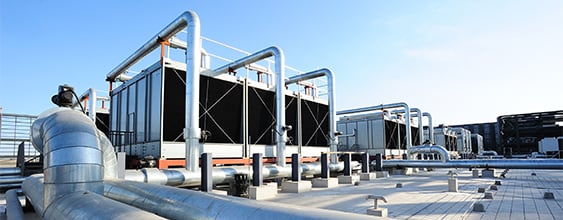Is it always better to retrofit than rebuild, from a carbon point of view?
As a structural engineer trying to design a new zero-carbon building, you quickly realize that no matter what you do – specifying low-carbon materials, optimizing the structure – it’s difficult, if not impossible, to reach zero without some form of carbon offsetting, at least with the current rate of grid decarbonization and the availability of renewable energy.
Obviously, the best option is not to build anything, but retrofitting existing structures is a middle ground. That can save a substantial amount of carbon emissions compared to new-build structures. I think that’s the path forward for the construction industry, particularly the commercial sector.
Are there any exceptions, when a new-build would be lower carbon than a retrofit?
There are questions about how efficient the existing building is, but that’s almost always related to operational carbon – if there’s an inefficient ventilation system, you can change it. There could be very rare cases where a structure is near to end of life – for instance, in a coastal zone where there’s active corrosion, or where the existing grid or floor-to-floor height significantly compromises future viability. There, it could make sense to build a new structure rather than expending significant resources to strengthen or adapt the existing one, which would also be carbon-intensive.
So there would have to be a need for new structural materials? Operational carbon alone could never sway the balance?
Exactly. If you have a building that is operationally very inefficient – let’s say it has a particular orientation that doesn’t get any sunlight, so it always takes a lot of energy and therefore operational carbon to keep the building warm. In the short term, you might wonder if it’s worth building a new building. But as the electricity grid decarbonizes, that operational carbon will fall, and continue to fall, so that in 20-30 years time, it’s very small. So that justification for building something new based on operational carbon savings won’t necessarily be the same in 10-20 years.
What about the embodied carbon of retrofitting itself?
When you refurbish a structure, there is always an interaction between the embodied carbon in the structural materials that you’re adding or replacing, and the operational carbon of the building. Let’s say you’re adding storeys on top of an existing building. As a structural engineer, you would typically choose the lightest system to reduce the embodied carbon as far as possible. But if it doesn’t have good insulation and thermal properties, that could increase the operational energy needed for heating and cooling, and therefore the operational carbon. So you might go with a thicker element and investigate more carbon-intensive concrete options, or you need to add more insulation.
But over a 20-30 year service life, you would still be saving on operational carbon. It's not a linear, straightforward problem, it’s an optimization problem. That’s why a good retrofit is multidisciplinary, involving collaboration between the architect, the structural engineer and the building services team to assess the whole-life carbon of a range of options.
How much difference could low-carbon materials make to the equation?
There is a lot of conversations around low-carbon materials in the industry nowadays, and it indirectly promotes the idea that design can be business-as-usual – that a structural engineer will come in at the end of the decision-making process and introduce a low-carbon material that saves the day. That’s passive decarbonization. Even if we magically come up with a concrete that has zero embodied carbon, we are still consuming the planet’s finite resources, with negative impacts to biodiversity and air quality from mineral extraction, transportation and manufacturing. There is always some sort of emission. So I don’t think that using a low-carbon alternative is a good justification for excessive use of materials.
So what should we do instead? What would active decarbonization look like?
The conversation should be about low-carbon strategies, not just materials, and we need to think about it from the get-go. For instance, if a developer wants to build two 20-storey towers, do they really need to do that? Could we retrofit the existing structure on the site, retain the basements and podium levels and add levels on top?
If there is a case for building a structure, the rule of thumb is that the closer the column space, the thinner the slabs, and the lower the overall embodied carbon, because the slabs are the most carbon-intensive of all structural elements. A WSP study found that for a typical car park building, increasing the span from 8m to 10m increases the embodied carbon by 25-30%. Typically, architects and developers want to have larger spans, but maybe now we need to think about integrating more columns. And more columns could mean that you lose car parking spaces, and that might mean lost revenue for the developer. So all of these conversations need to happen at the very beginning, and be supported by carbon-centric optioneering studies.
To give a numerical perspective, if we specify the best low-carbon concrete currently available in the market, we can save on average up to 20-25% of the embodied carbon. But if we could play with the column spacing at the beginning, that could save another 20-30%. So active decarbonization means not leaving it to material replacement. Think about reuse, think about changing the design – and think about not building at all.
- Mahdi Babaee is a technical director and national net-zero lead (structures) at WSP in Australia















